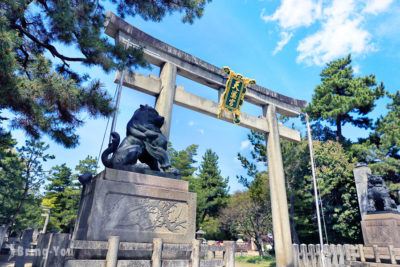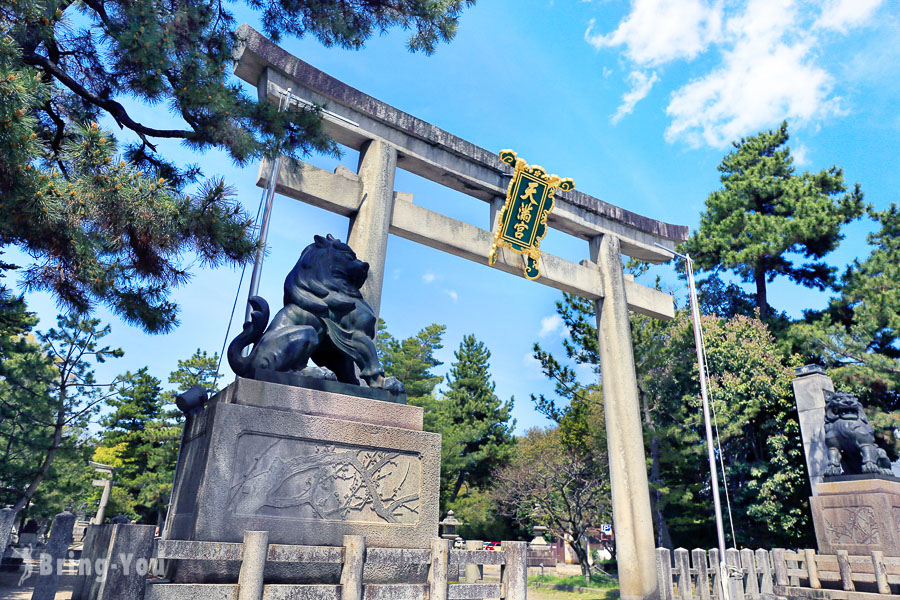Today, Piaoer came to the Kitano Tenmangu Shrine, which has a history of thousands of years. It is not only a great place to enjoy maple leaves in autumn, but also a famous spot for viewing plum blossoms in early spring from February to March. The pink and white plum blossoms are even more elegant and noble in the ancient shrine. It’s truly fascinating!
Transportation to Kitano Tenmangu Shrine
- Address: Machikado, Kamigyo-ku, Kyoto City, Kyoto Prefecture
- Admission: Free (except for the Treasure Hall on the 25th of each month, the Plum Garden during the plum blossom season, and the Maple Leaf Garden in autumn, which require additional fees)
- Opening hours: April to September 05:00~18:00, October to March 05:30~17:30, and on the 25th of each month during the temple fair 06:00~21:00 (free admission)
- Official website
To get to Kitano Tenmangu Shrine, you can take the Keifuku Electric Railroad (Arashiyama Line) and get off at “Kitano Hakubaicho Station” and walk for about 5 minutes; or take the Kyoto City Bus and get off at “Kitano Tenmangu-mae” and walk for about 5 minutes.
Itinerary Suggestions for Kitano Tenmangu Shrine
The Kitano Tenmangu Shrine is very close to the Golden Pavilion Temple. It only takes about 10 minutes by bus to get to the Golden Pavilion Temple. The Kitano Shirakawa-cho Station where it is located can be reached directly by the Randen from Arashiyama, which is a good choice for a smooth trip. Float recommends purchasing the Kyoto City Bus One-Day Pass before your free trip to Kyoto. In addition to visiting the Kitano Tenmangu Shrine to see the plum blossoms, you can also take a one-day trip to Arashiyama and the Golden Pavilion Temple. You can buy a Randen One-Day Pass when taking the Keifuku Electric Railroad (Randen) from Arashiyama, and plan your itinerary according to the transportation ticket you purchased to save transportation expenses.
How to make good use of transportation tickets to take Kyoto buses: Kyoto Bus Guide: Introduction to using Kyoto City Bus One-Day Pass
Introduction to Kitano Tenmangu Shrine
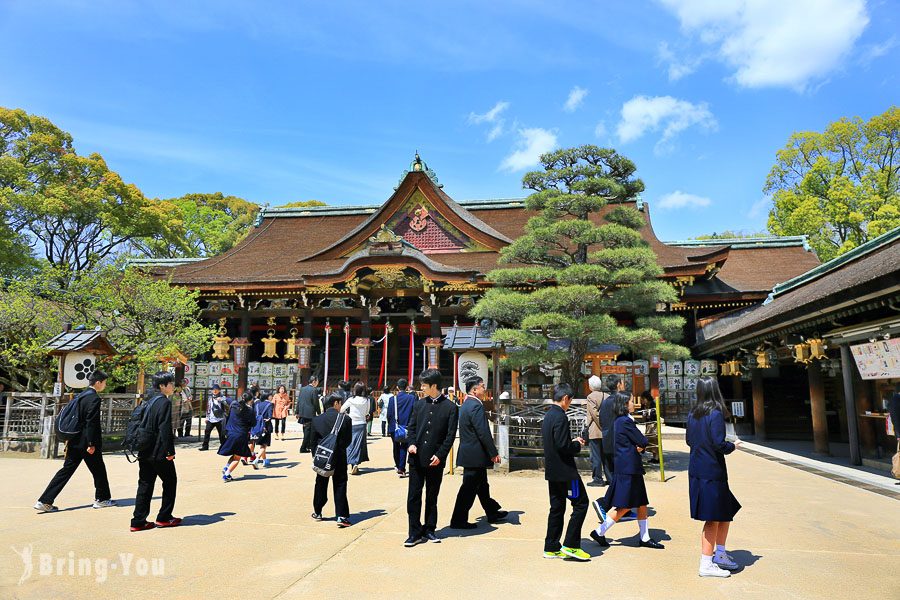
Kamigamo Shrine in Kyoto is one of the 12,000 Tenmangu Shrines throughout Japan, along with Dazaifu Tenmangu Shrine, and serves as the head shrine. Established in 947, it has a history of over a thousand years and is dedicated to the god of learning, Sugawara no Michizane. As a scholar himself, Michizane was highly accomplished, and as such, Kamigamo Shrine is not only visited by the general public, but also by young students and exam takers seeking success in their studies and skills. It is a renowned shrine for those seeking academic success.
If you come before the 25th of every month, you can celebrate Sugawara no Michizane’s birthday and memorial day on the 25th, which is known as “Tenjin Day”. Don’t miss the “Tenjin Market” on the approach to the shrine, where you can find treasures and browse antiques and vintage clothing!
Sugawara no Michizane – The Most Famous Unjust Ghost in Kyoto
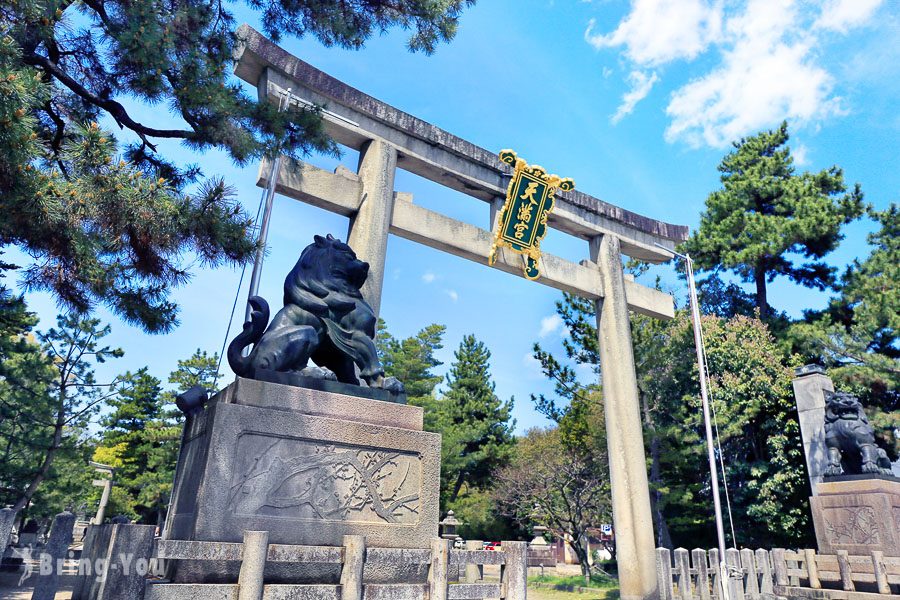
Legend has it that Kitano Tenmangu Shrine was built to calm the soul of Sugawara no Michizane. This nobleman from the 9th century was similar to China’s Qu Yuan, with aspirations but an unsuccessful political career. He had already risen to the position of Minister of the Right in Kyoto, but was framed by the Fujiwara clan and exiled to Dazaifu in Kyushu. He died of depression in 903 AD, and then earthquakes, thunderstorms, lightning strikes, and the death of Emperor Daigo’s son occurred in Kyoto. People believed that the vengeful spirit of Sugawara no Michizane was causing these events, so Kitano Tenmangu Shrine was established in 947 AD to appease and suppress his grudge.
Extended reading: [Kyoto Ghost Spots] Walking in the Kyoto underworld! The tourist attractions you have visited are actually execution grounds and haunted places?
【Beiyeno Tenman-gu Shrine Attractions】Pine Trees on the Premises
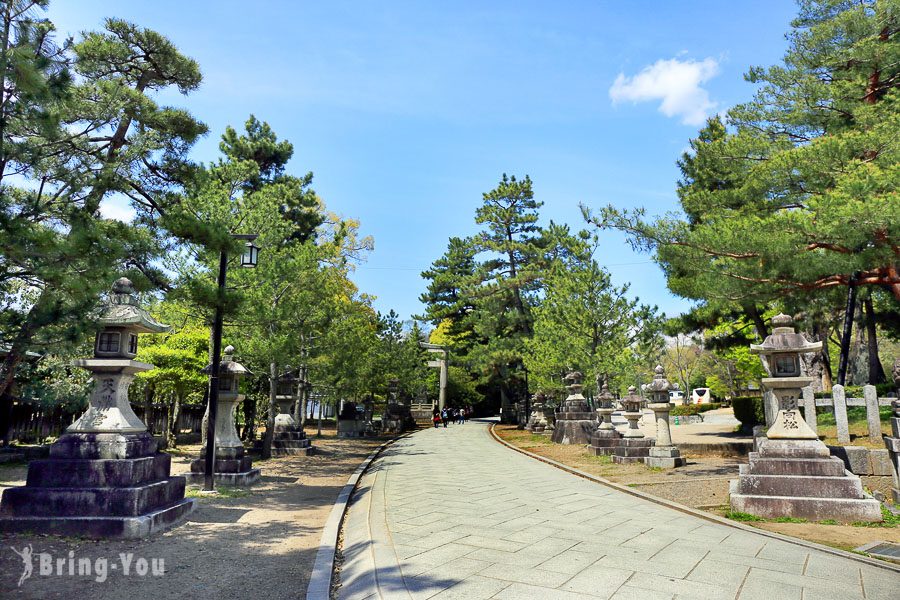
After entering the Kitano Tenmangu Shrine, you will walk along a path lined with tall pine trees, emitting a faint fragrance of plum blossoms. The combination of plum blossoms on the left and pine trees on the right creates a Zen-like atmosphere, making it a very soothing and healing experience.
【Beiyeno Tenman-gu Shrine Attractions】Niu Shi Statues Along the Way
There is a row of stalls and several cow statues in front of the building. People are queuing up to touch them. It is said that Sugawara no Michizane was born on the day of the Ox in the Ox month of the Ox year in the 12th year of the Shōwa era. The Ox became a sacred object used by the gods, and there are cow statues in many Tenmangu shrines in Japan.
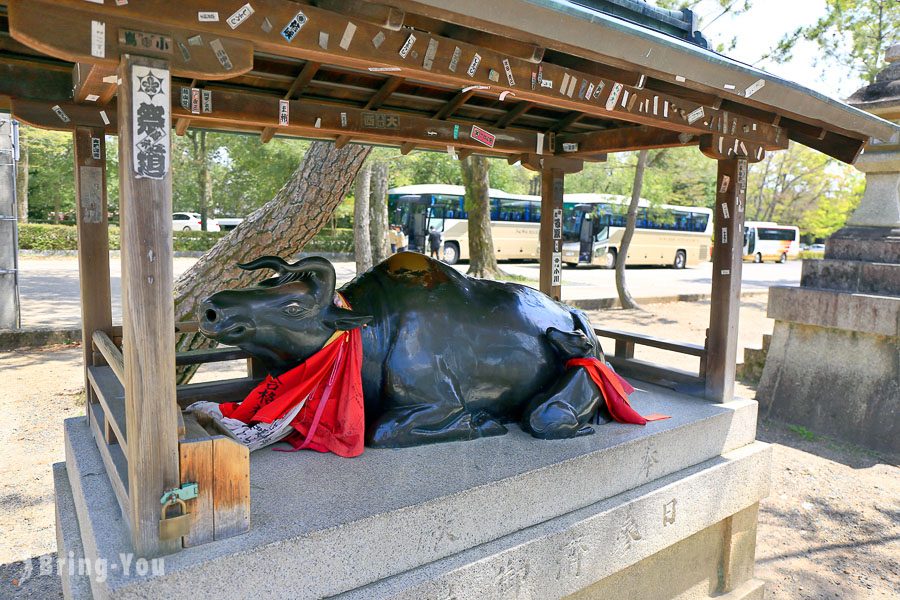
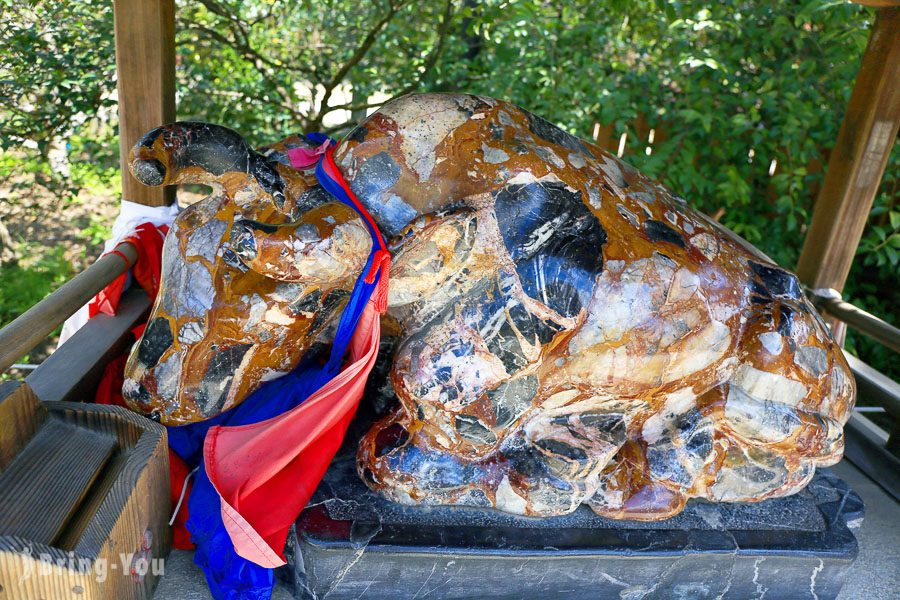
【Beiyeno Tenman-gu Shrine Attractions】Tower Gate
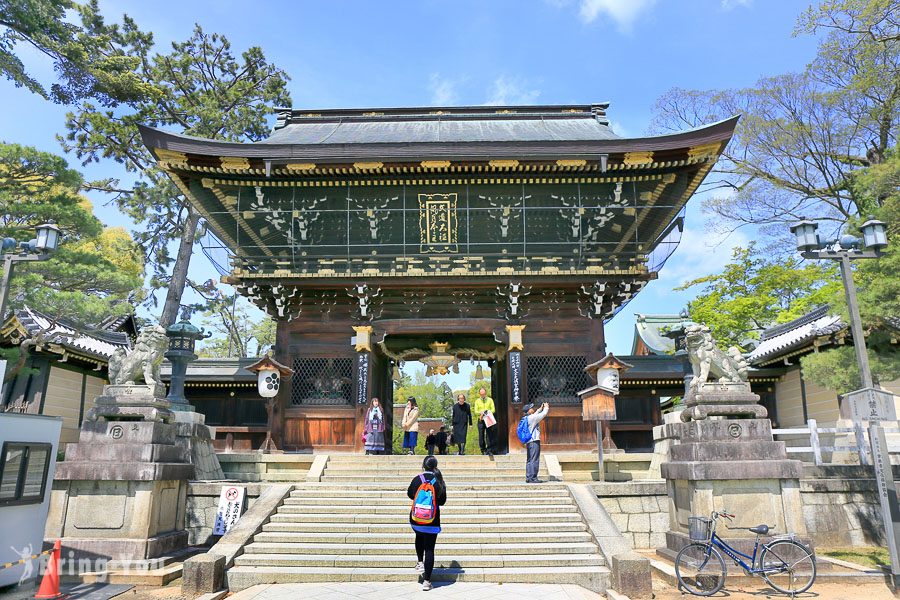
After passing through the torii gate, I arrived at the entrance of the building. The plaque on the upper level reads “Wendao Dazhu, the Lord of Wind and Moon,” praising the historical status of Sugawara no Michizane.
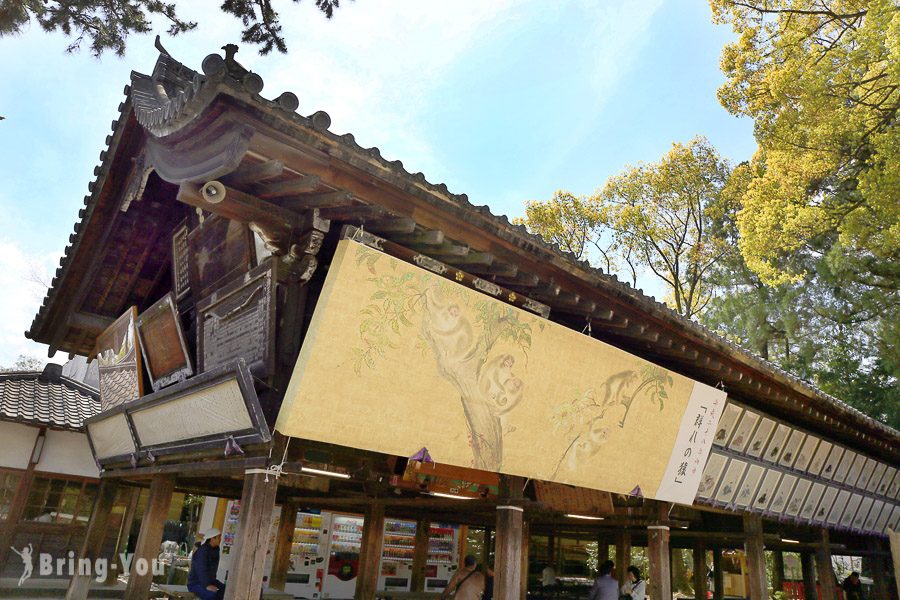
【Beiyeno Tenman-gu Attractions】Sanko Gate
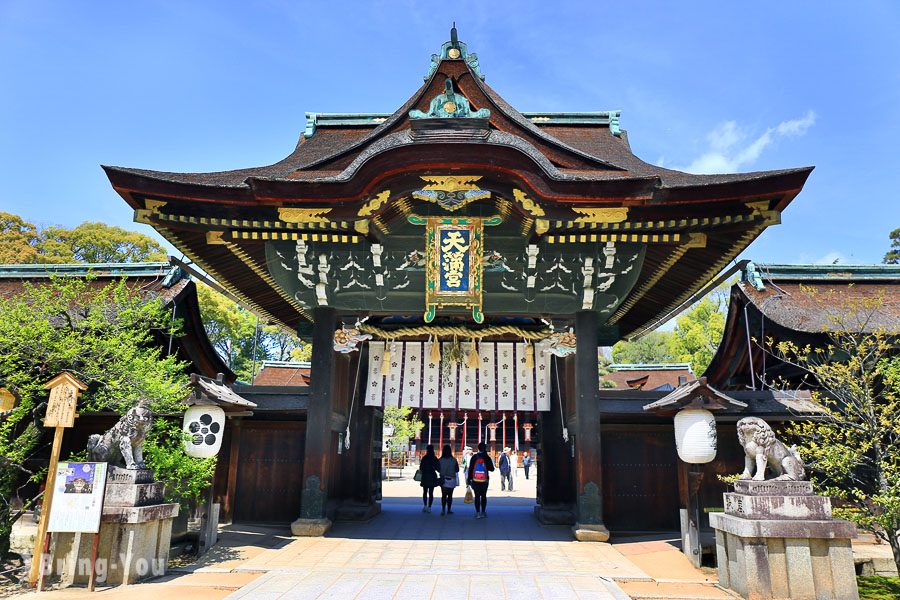
Next, we come to the highlight of Kitano Tenmangu Shrine, the “Sanko-mon Gate”! This is the middle gate of the shrine and also the main gate, also known as the Sanko-mon Gate. The Sanko-mon Gate features three images of the sun, moon, and stars, but interestingly, the stars are missing from the gate. Why is that? It turns out that if you look up at the sky at night, you can see the North Star shining alongside the sun and moon, creating the three lights of the Sanko-mon Gate.
【Běiyě Tiānmǎn Gōng jǐngdiǎn】Shèdiàn
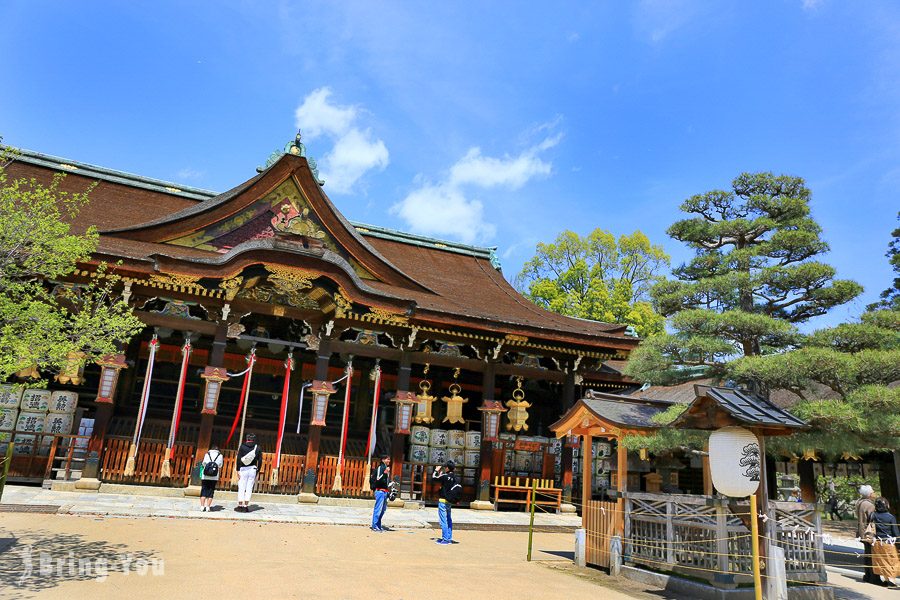
The final destination is the Hokawa Tenmangu Shrine, which is “Hachidouzou” and has a novel design that connects the main hall and the worship hall. Its architectural craftsmanship has the style of the Momoyama period, and its characteristics can be seen from the exquisite carvings and gorgeous decorations.
Beikeno Tenman-gu amulet
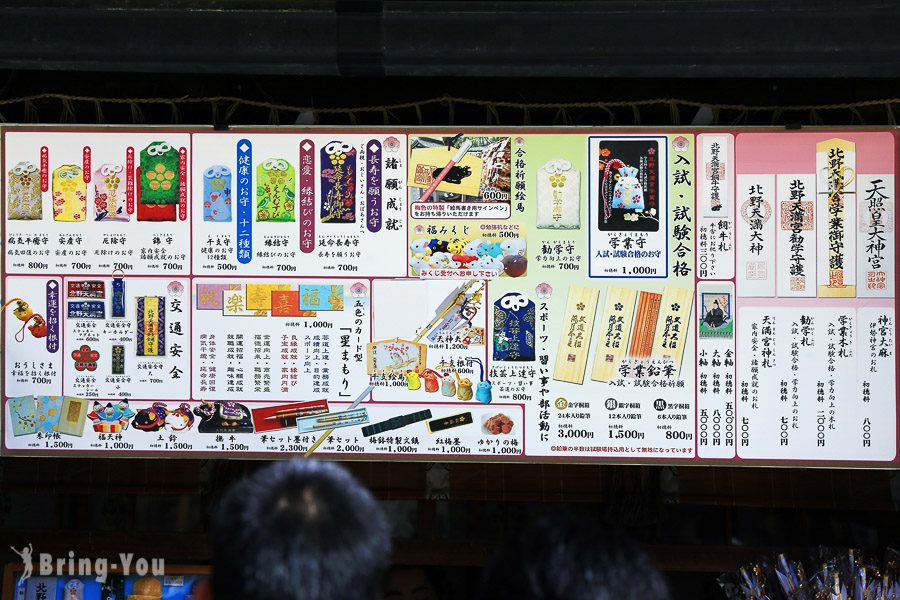
Due to the influence of Chinese Han culture, Japan also traditionally uses the twelve zodiac animals to mark the years. Many Japanese shrines sell omikuji (fortunes) featuring the twelve zodiac animals, each with their own unique design. However, most of the omikuji related to the zodiac animals are based on the zodiac animal of that year, and will be replaced with the next zodiac animal after the year is over. Therefore, for those who want to collect a complete set of twelve zodiac animal omikuji, I highly recommend the original twelve zodiac animal omikuji from Kitano Tenmangu Shrine. You can’t find them at other shrines!
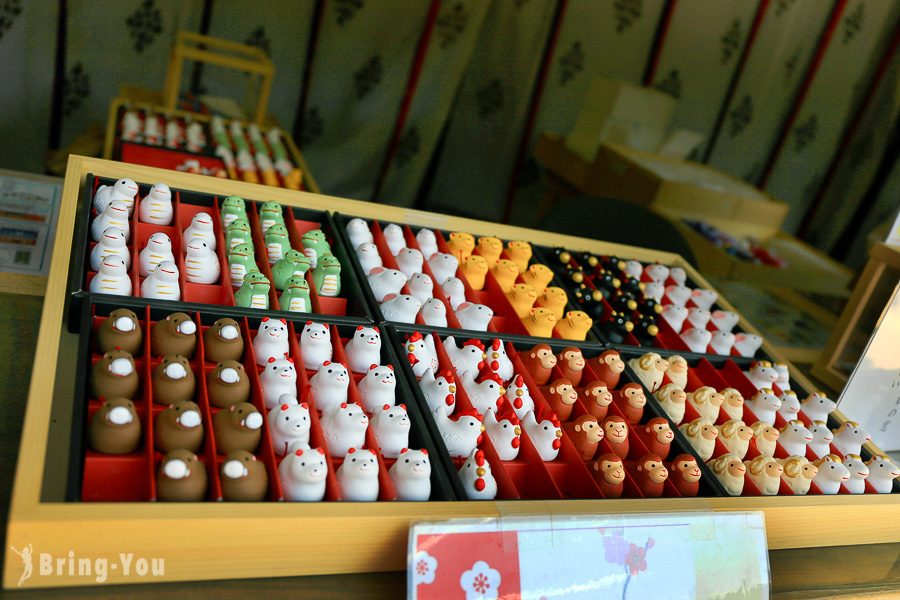
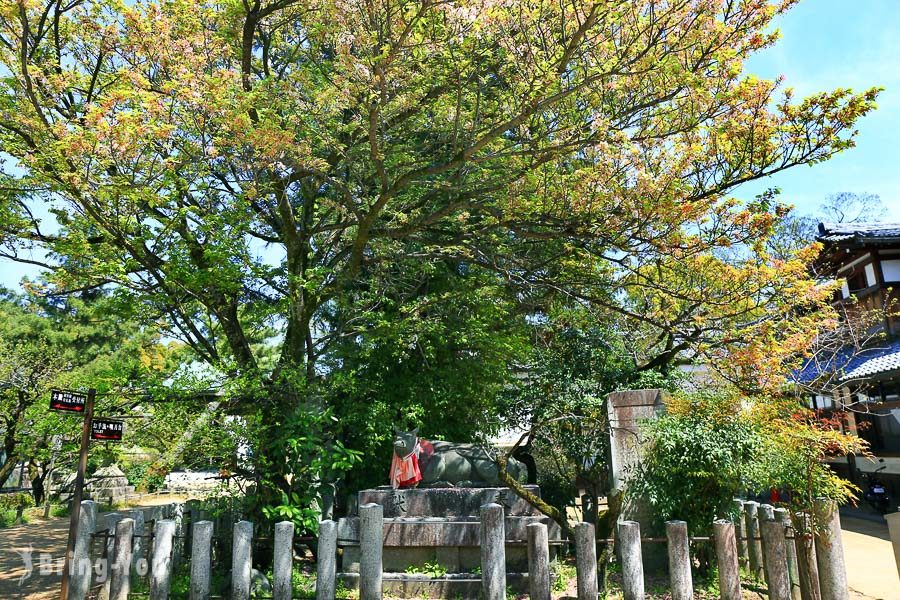
In addition to the Tenmangu Shrine in Kyoto, the Tenmangu Shrine in Osaka is also quite famous, especially the “Tenjin Festival” held from July 24th to 25th every year, which has a history of thousands of years and is one of Japan’s famous three summer festivals.
Recommended Tour: Tenjinbashisuji Shopping Street – Japan’s Longest Shopping Street + Osaka Tenmangu Shrine Food and Shopping Guide
【February Attractions of Kitano Tenmangu Shrine】Plum Garden
- Plum blossom viewing season: early February to late March
- Plum blossom viewing hours: 09:00~16:00
- Admission fee to Plum Garden (includes tea and snacks): Adults (high school students and above) 800 Japanese yen, children 400 Japanese yen
The Plum Garden at Kitano Tenmangu Shrine is only open during the first half of February when the plum blossoms are in full bloom or about to bloom. The sight of the blooming or budding plum blossoms is breathtaking. While enjoying the fragrance of the plum blossoms, visitors can also taste tea and snacks, which adds to the unique experience. However, unfortunately, the garden was not open when I visited during the summer.
【Autumn Scenery at Kitano Tenmangu Shrine】Yodoin Illuminated Nighttime Fall Foliage
Every year from November to December, when the sun sets at around 8:00 pm, Kitano Tenmangu Shrine’s Otoko-ike pond is illuminated with beautiful red leaves, creating a stunning autumn scenery. The combination of the red stage, the nightingale bridge, and the fiery red maple leaves is truly breathtaking. Kitano Tenmangu Shrine is known for its “late autumn foliage,” and the best time to enjoy the autumn leaves is from late November to early December. Don’t miss the chance to visit Kitano Tenmangu Shrine’s Otoko-ike pond at night during the autumn season.
Take your elders to see two maple leaf spots by bus with ease: Kitano Tenmangu Shrine, Night Maple Viewing, Maiko Performance, and Garden Kaiseki Cuisine
【Nearby Attractions of Kitano Tenmangu Shrine】Seven Houses on Flower Street
▼ After visiting Kitano Tenmangu Shrine, you can go to Kamishichiken from the nearby gate.
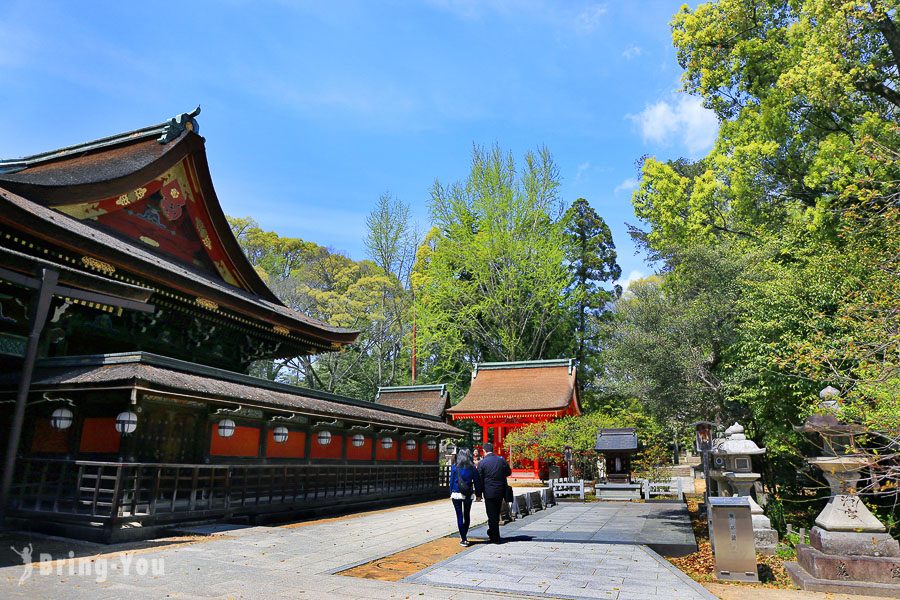
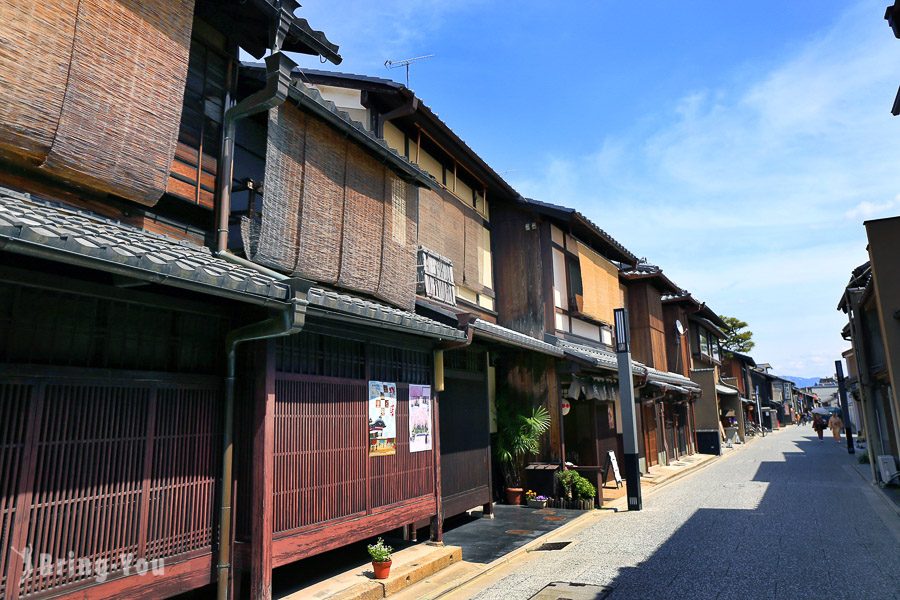
Arriving at the ancient alley of Nishijin, “Hana-machi Shichiken on the Flower Street”, besides Gion Hanami-koji, it is a less well-known but flavorful flower street in Kyoto.
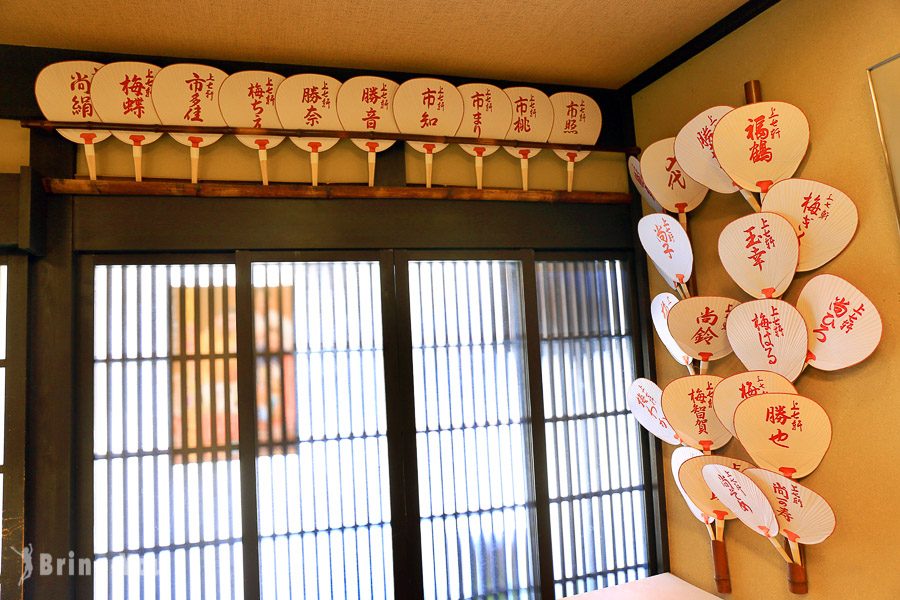
Shichiken is a famous flower street in the Nishijin area of Kyoto, along with Gion Kobu, Gion Higashi, Pontocho, and Miyagawa-cho, collectively known as the five flower streets of Kyoto. During the Muromachi period, when the Kitano Tenmangu Shrine was being rebuilt after being destroyed by fire, people used the remaining building materials to construct seven tea houses, which became the origin of “Shichiken.” Later, Shichiken became a resting place for visitors to the Kitano Tenmangu Shrine. Today, this is the oldest flower street in Kyoto’s history, and you can occasionally see maiko and geiko performances here.
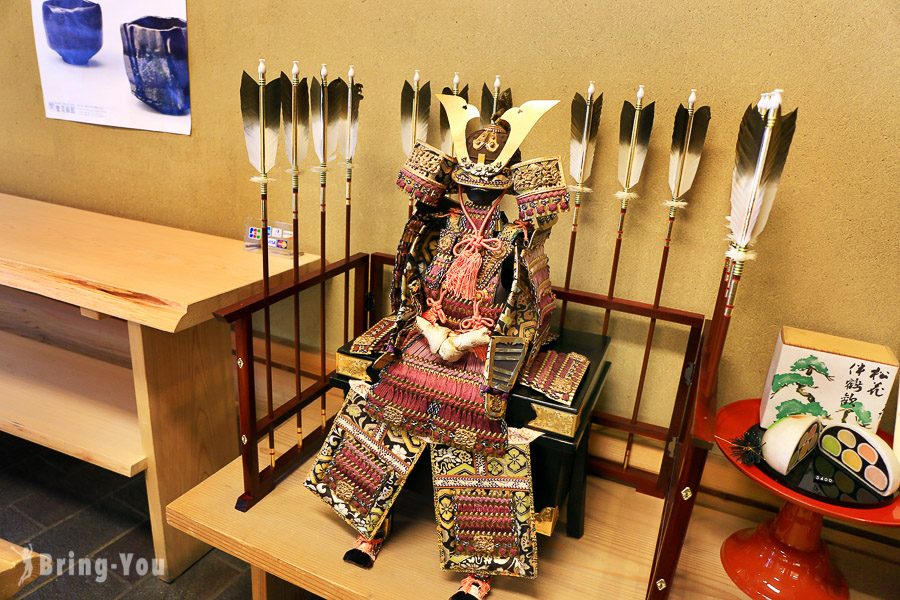
【Old Pine of Shangqixuan Wagashi Store】
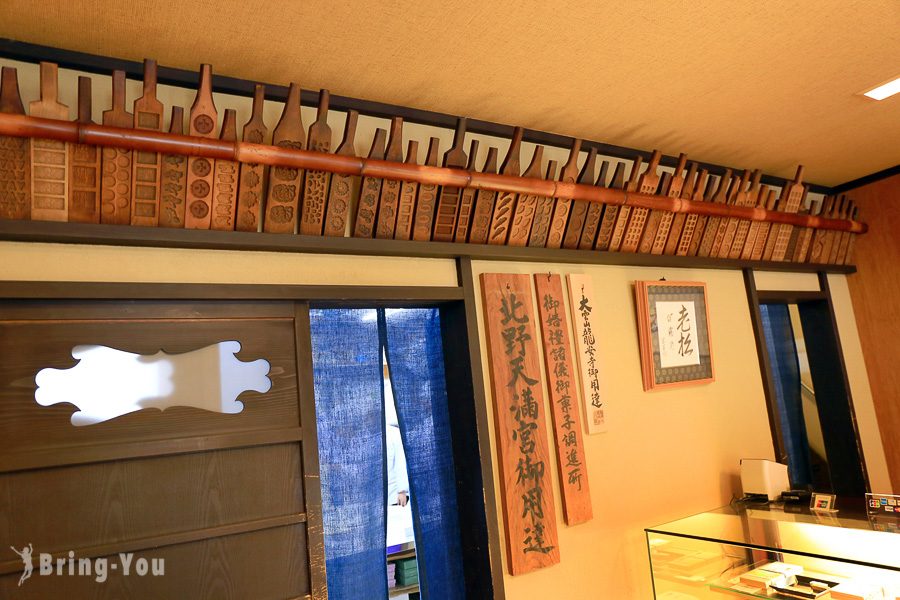
There is a famous Japanese dessert shop called “Old Pine” on Shangqixian Road, which was originally a traditional Japanese confectionery shop that specialized in making wagashi for the Japanese emperor. Nowadays, it sells exquisite wagashi desserts and is a great place to buy souvenirs.
There is also a branch in Arashiyama: [Arashiyama Dessert Afternoon Tea] Oimatsu: A Kyoto confectionery shop that must try seasonal limited edition summer citrus candy and cherry blossom mochi
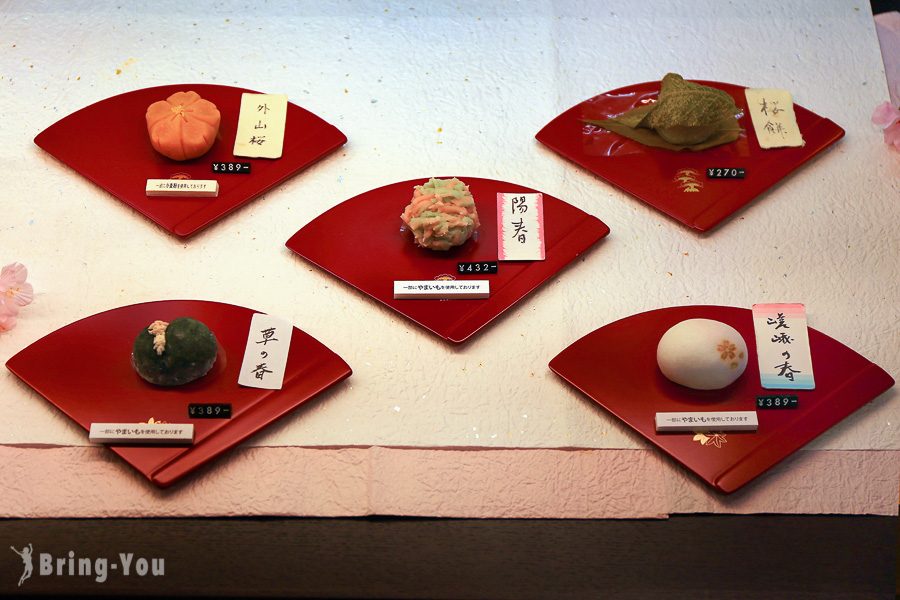
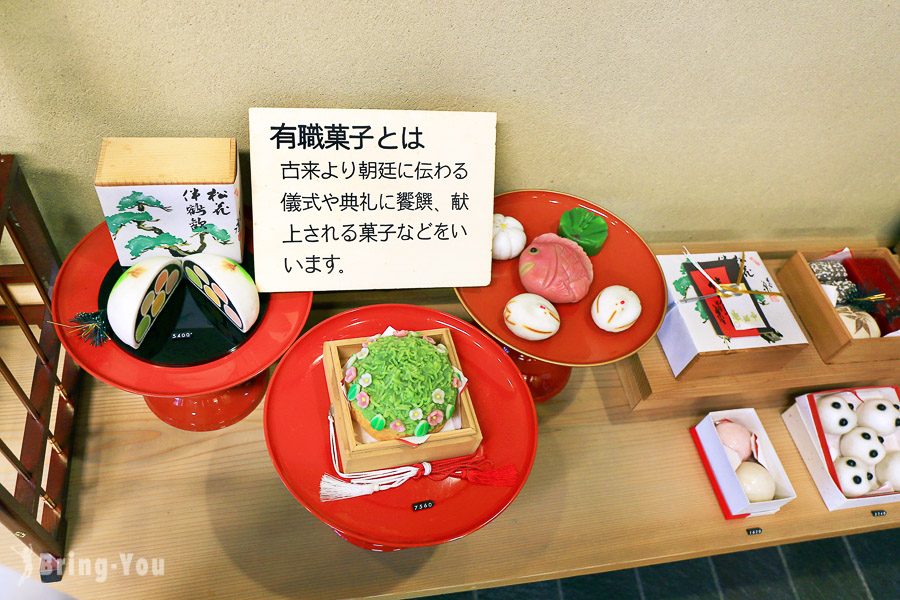
In addition, because there are relatively few tourists in Kamishichiken, you can take a leisurely stroll and savor the everyday scenery and flower district atmosphere of Kyoto. It is a hidden gem that only Kyoto experts know!
【Near Kitano Tenmangu Shrine Restaurant】Nikora Soba House
If you want to have a satisfying meal, there is a Michelin-starred restaurant called “Soba-ya Nikora” in Nishijin, a 10-minute walk east from Kitano Tenmangu Shrine. You can taste the “Mino Jippa Soba” made without any flour in a traditional machiya house. The menu includes bamboo sieve cold soba, duck Nanban soba, and more. It is a restaurant worth trying for those who love the taste of soba.
